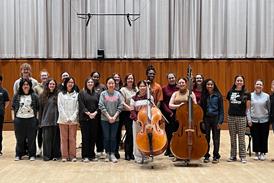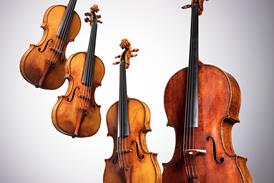- News
- For Subscribers
- Student Hub
- Playing Hub
- Directory
- Lutherie
- Magazine
- Magazine archive
- Whether you're a player, maker, teacher or enthusiast, you'll find ideas and inspiration from leading artists, teachers and luthiers in our archive which features every issue published since January 2010 - available exclusively to subscribers. View the archive.
- Jobs
- Shop
- Podcast
- Contact us
- Subscribe
- School Subscription
- Competitions
- Reviews
- Debate
- Artists
- Accessories
Fingerboards: The lighter option

While the acoustics of the violin soundbox have undergone rigorous testing, the neck and fingerboard have been virtually ignored. Joseph Nagyvary reveals the results of experiments showing that a lighter material might be preferable to the standard ebony
The violins of the old Italians, including Antonio Stradivari, normally had hefty necks with short fingerboards. This Baroque set-up was incrementally altered over the decades until the early 19th century, by which time the longer modern form, with hard, heavy ebony replacing the softer maple and poplar, became standard. During this period of re-engineering there was hardly any concern that the alterations could cause significant change in tone colour. In fact this was only revealed in 2009, when acoustician John E. McLennan compared Baroque and modern set-ups on the same violin. He discovered that during the Baroque-to-modern transformation, the main body resonance (‘B1+’ in physicists’ terminology) was lowered by about 40Hz, and there were several changes over the entire frequency spectrum.
Already subscribed? Please sign in
Subscribe to continue reading…
We’re delighted that you are enjoying our website. For a limited period, you can try an online subscription to The Strad completely free of charge.
* Issues and supplements are available as both print and digital editions. Online subscribers will only receive access to the digital versions.




























